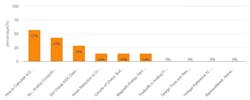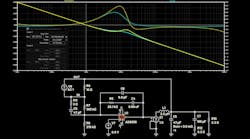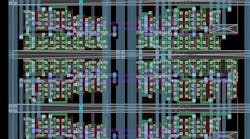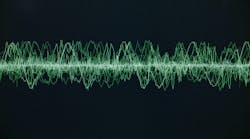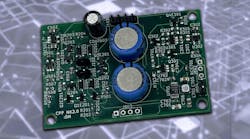Readers’ Choice: The Best Analog Articles of 2024
What you’ll learn:
- Which 2024 articles were the top choices of Electronic Design readers?
- More than half of the top articles of 2024 were contributed by practicing engineers.
- You can be a possible nominee for best article of 2025 by contributing content to Electronic Design.
Electronic Design’s readers have decided the best analog articles of 2024, in a poll that closed a few days ago. ED’s Mostly-Analog Editor combed through dozens of articles in each month to nominate its best article, presenting the 12 candidates to readers in the experimental "12 Days of Analog" series.
The daily additional entries, though chosen and entered by hand, were revealed one at a time each day in the same article and web page. Some twisted scheming by our editor team hacked Electronic Design’s Content Management System (CMS), negating the need to add and publish each new entry a few minutes after midnight each day—man behind the curtain stuff. It worked well, so it will likely be used again.
After the 12th day, nominations for each month fully completed the "12 Days of Analog" posting. Then a reader poll was conducted, asking readers to choose up to three of the best 2024 articles that would determine the top analog articles of 2024.
The results are presented in the following chart (yes, they don’t add up to 100% because of the “up to three” choice capability):
For readers’ convenience, the top three analog articles are readable in the following links:
Editor’s Scribbles
I must say that I can’t disagree with the ranking of the articles that our readers have selected. All show an interest in design techniques and new ways of doing things, which is far from unexpected. Chip design was clearly of interest and readers weren’t turned off by an article with differential equations embedded in it much to the chagrin, no doubt, of my copy editor. He has fits in having to hand edit every superscript and subscript to get them properly formatted in ED’s CMS that turns everything into the eye candy you see on our site...he makes me look darned good to our readers. E=mc2, Roger.
Of interest to me, in looking at the outcome of the poll was that the top article was a contributed one, with the next two being written by a hired-gun professional editor (me, now with about eight months being an editor who still does engineering versus having been an engineer with grammar skills). Looking at the runners-up, they too were contributed pieces. What does all of this mean?
It means you, our readers, produce interesting, engaging, and valued content for Electronic Design’s readership worldwide. Yes, there’s an ED technology editor, and copy editor, behind every contributed article submission. But the content, the guts, are sourced from a practicing engineer’s heart, sweat, and blood (and cortisol).
Though there’s no trip to Hawaii, or luggage set, as compensation for the effort, it’s satisfying to get to have your knowledge and skills shared with so many other engineers. There’s also the satisfaction of having a legacy that goes beyond a paragraph notation of what you know/did in your annual performance review, which then gets put in a file folder never to be seen again. You get to be an influencer of other EEs and practitioners, without all of the drama.
One of the biggest surprises I had, early in this job, was having an email come in from one of the rock stars of analog, commenting and asking me for an opinion. Wow! This was not only my experience—my other contributing authors also shared having been contacted and in conversation with a who’s who of the subject matter that they authored and contributed. Words can’t describe this connection, other than maybe “surreal,” which doesn’t do justice to the surprise of such an experience. While we’re not peer-reviewed, we are peer-viewed.
Many of you have skills and knowledge that aren’t trade secrets and could make the world a better place or help a wet-behind-the ears new grad’s, or intern’s, career get off to a better start. It seems the idea of master/apprentice, even mentoring, has gotten lost in the YouTube era.
When it comes to new design areas, which has been abandoned by many HR and robot job screeners, we all have the basic skills and knowledge to understand, but not to do. We’re all new grads when it comes to researching and learning while embarking on a journey through uncharted design waters. This is where Electronic Design’s mix of articles shines, whether contributed, editor, or even sponsored.
With this poll showing that our readers are more than capable of writing the top content of the year, think about authoring one of those for the 2025 list. Such articles are typically around 1,200 words, with enough technical depth to be competent to your peers, our readers, who will see value in the content and it being engaging to be worth their time.
I take a slightly different approach to contributed articles in that I ask for a paragraph or so that outlines the concept or idea of what’s being proposed as an article, and then we work together to refine it as a framework and guide for the final draft. So, if you have an idea for an article or topic you’d like to write about, get that paragraph into an email to me and we’ll take it from there. Who knows, you may get nominated for analog article of the month by me, or be chosen among the best of those for 2025.
All for now,
-andyt
Mostly-Analog (Technology) Editor
p.s. I do have a very diverse background if you check out my bio, so areas like power supply, amplifiers, audio, comms, links, clocking and CDR, signal integrity, automation, chip design, automotive stuff, additive manufacturing, test, computing, etc., are topic areas that are very welcome. If it’s outside my wheelhouse, I’ll forward it to one of the other very-capable crew here. For some of you fossils of industry/academia, like me, your reflection on the industry or technology over your careers is also of interest. You have nothing to lose by emailing a paragraph so that I can give it a look. Oh yeah, the runners-up pieces are also worth a read if you haven’t read them already:
AndyT's Nonlinearities blog arrives the first and third Monday of every month. To make sure you don't miss the latest edition, new articles, or breaking news coverage, please subscribe to our Electronic Design Today newsletter.
About the Author
Andy Turudic
Technology Editor, Electronic Design
Andy Turudic is a Technology Editor for Electronic Design Magazine, primarily covering Analog and Mixed-Signal circuits and devices. He holds a Bachelor's in EE from the University of Windsor (Ontario Canada) and has been involved in electronics, semiconductors, and gearhead stuff, for a bit over a half century.
"AndyT" brings his multidisciplinary engineering experience from companies that include National Semiconductor (now Texas Instruments), Altera (Intel), Agere, Zarlink, TriQuint,(now Qorvo), SW Bell (managing a research team at Bellcore, Bell Labs and Rockwell Science Center), Bell-Northern Research, and Northern Telecom and brings publisher employment experience as a paperboy for The Oshawa Times.
After hours, when he's not working on the latest invention to add to his portfolio of 16 issued US patents, he's lending advice and experience to the electric vehicle conversion community from his mountain lair in the Pacific Northwet[sic].
AndyT's engineering blog, "Nonlinearities," publishes the 1st and 3rd monday of each month. Andy's OpEd may appear at other times, with fair warning given by the Vu meter pic.

